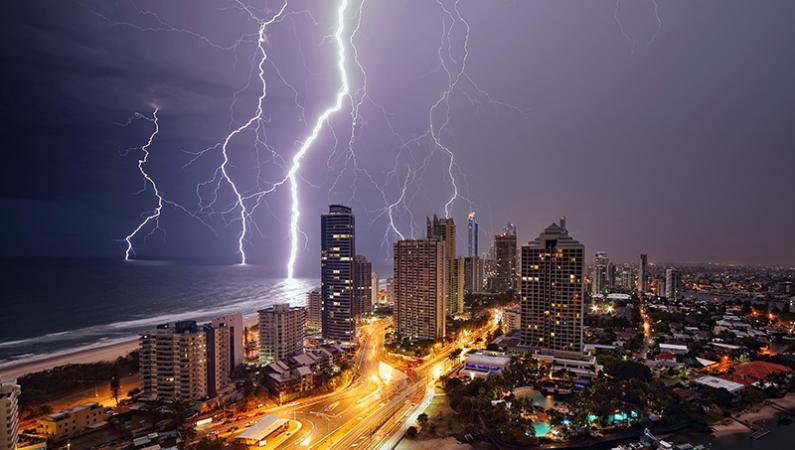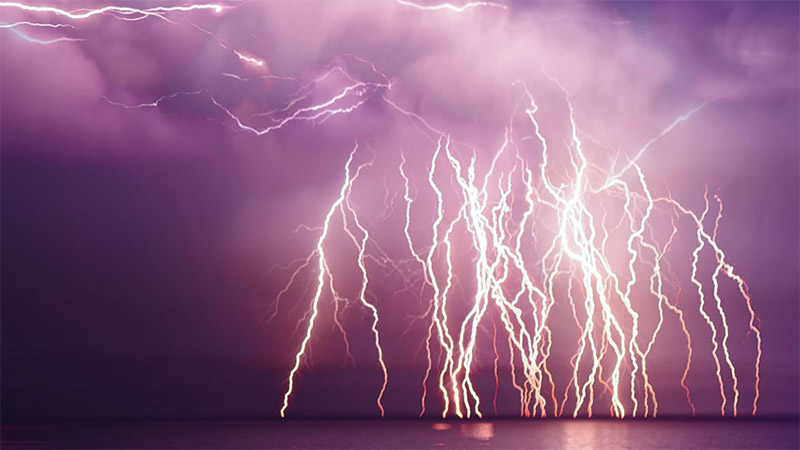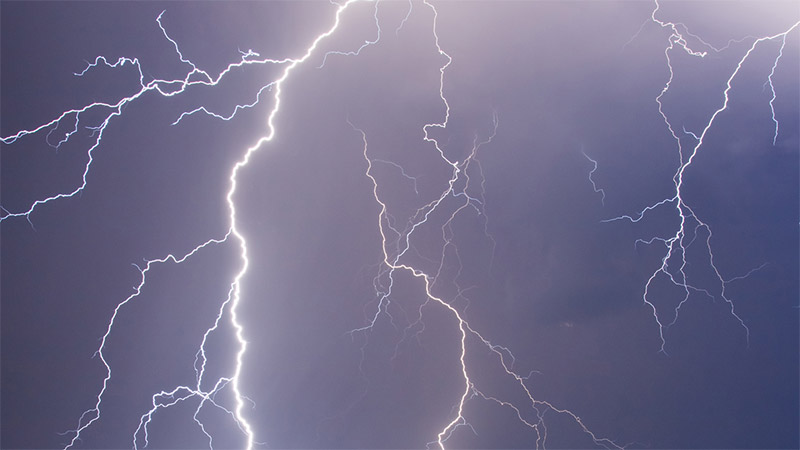Top lightning events of 2020
On January 5, we released our Annual Lightning Report for 2020. The Annual Lightning Report is released each January and provides a comprehensive overview of lightning detected around the Continental United States by National Lightning Detection Network (NLDN) and around the rest of the planet by Global Lightning Dataset GLD360. To complement the Annual Lightning Report, here are some of the big lightning stories you may have missed last year.
The great lightning drought
NLDN has been detecting lightning across the United States since 1989, longer than any other lightning detection network. 2020 experienced the most significant year-over-year decrease in lightning detected in its 31 years of operation. Between April and June 2020, NLDN detected 62% fewer cloud-to-ground lightning strokes than between April and June 2019. This is a 52% decrease compared to the average lightning for that time period. Learn more about what could have caused this incredible decrease in lightning.
California lightning wildfires
In what was described as a “lightning siege,” California saw about 50% of its average August lightning in just four days between August 15 and 18. Much of the lightning was concentrated in the Bay Area and North-Central California, triggering hundreds of wildfires in a drought-stricken region. The August Complex, CZU Lightning Complex, LNU Lightning Complex, and SCU Lightning Complex Fires combined to burn more than 1.8 million acres of land.
High-latitude lightning
In 2019, GLD360 detected the northernmost lightning on record, just 52 kilometers from the North Pole. On July 1-2, 2020, GLD360 detected more lightning north of 85°N than any previous year, when multiple thunderstorms developed north of Siberia and moved north across the Arctic Ocean. GLD360 detected 192 lightning events in 21 hours, but none of them were as close to the North Pole as occurred in 2019.
Taal Volcano eruption and lightning – January 12-13, 2020
At approximately 0700 UTC on January 12, 2020, Taal Volcano erupted for the first time since 1977. The eruption sent a plume of steam, gas, and tephra (ash and other particulates) 10-15 kilometers into the atmosphere. The collisions of tephra, water from the crater lake of Taal Volcano, and ice crystals in the eruption plume generated significant amounts of electric charge separation, resulting in volcanic lightning. GLD360 detected more than 34,000 lightning discharges in 14 hours. Read more about volcanic lightning.
The Washington Monument struck by lightning
On June 4, 2020, the Washington Monument in Washington, D.C. was struck by lightning and a video of the event went viral. Using 10 years of data from NLDN, we estimated that the Washington Monument is struck by lightning up to twice per year.
What will 2021 have in store?
No one can predict what lightning events will occur in 2021, but Vaisala’s renowned team of lightning experts will be monitoring the data throughout the year. Stay tuned to the Vaisala blog for exciting lightning stories as 2021 progresses and reach out to us with any of your lightning questions. You can leave a comment below or reach us at [email protected]!




Add new comment